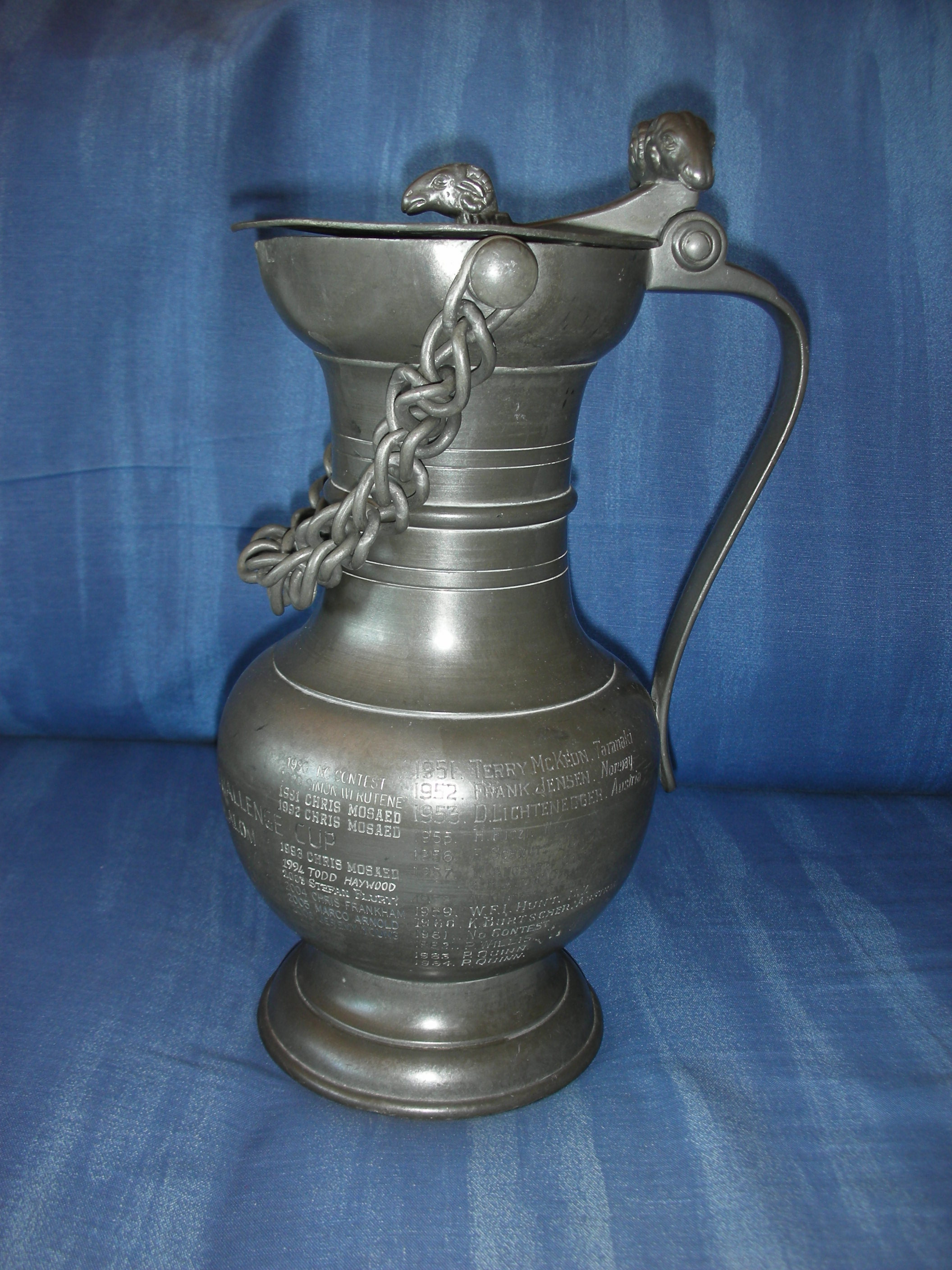Race History
During the 1950 winter season, Swiss ski instructor and Ruapehu Alpine Lifts (RAL) entrepreneur Walter Haensli, established a ski race to encourage open competition between instructors and amateurs at Ruapehu. He wanted young racers to try and match themselves against skiers of a higher standard. As a result of lobbying by Haensli, the NZ Ski Council adopted the idea and whenever provincial and national championships were held there was an ‘open’ category which anyone, instructors included, could enter.

In 1951 Haensli arranged to have two pewter trophies of special design made in Switzerland, together with miniature copies, to be awarded annually for men’s and women’s open events on Ruapehu. Just a few years later the NZ Ski Year Book of 1954 reported “This competition has become a very popular one on the mountain and has already gone some way in the design of the originator to improve the standard of New Zealand skiing by fostering competition between the best amateur and professional runners available to compete in this annual event.
The Haensli Cup race was run as a two-run giant slalom by the Ruapehu Ski Club for many years and usually saw a strong turnout of Ruapehu skiers. In 1952 club officials contacted Walter Haensli and asked if the race could be run under amateur rules. He agreed to this change and the race continued to be organised by RSC up until 1979.
From 1979, the Haensli Cup became one of the premier events of the North Island circuit races and in the 1990s was designated a FIS race. However, the race had a chequered history during the eventful 1990s (with cancellations 442 to eruptions and lack of snow) and it has been difficult to find out when the race was last contested. Sadly the race was not held in 2001 its 50th birthday year. This historic race was returned to the Ruapehu racing calendar in 2003.